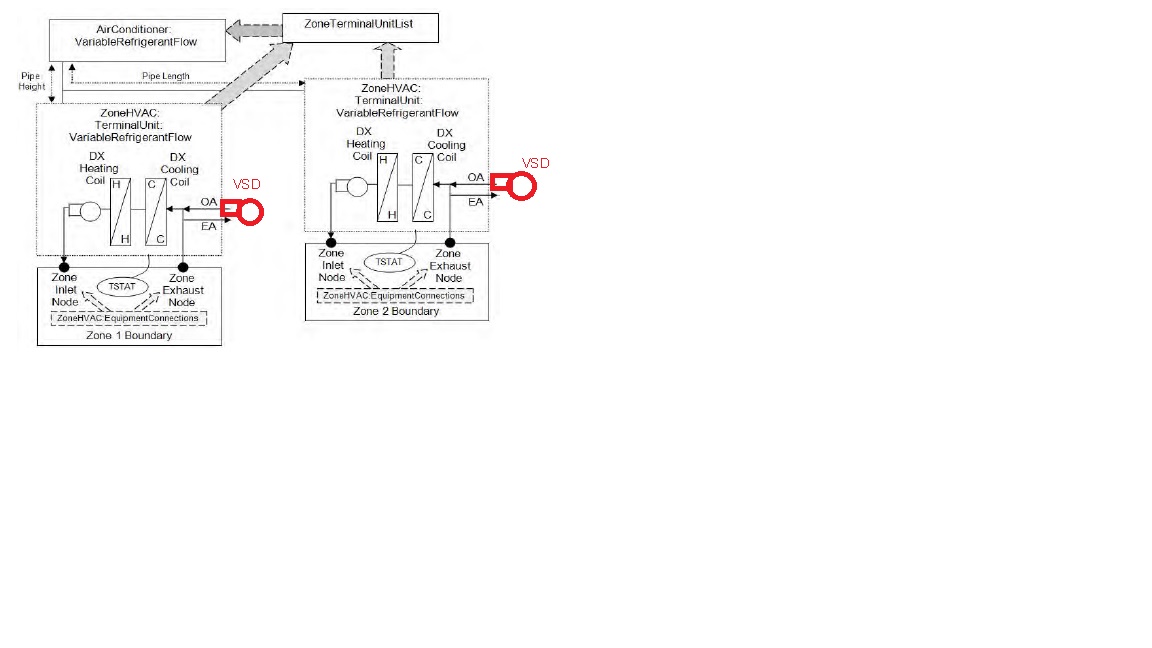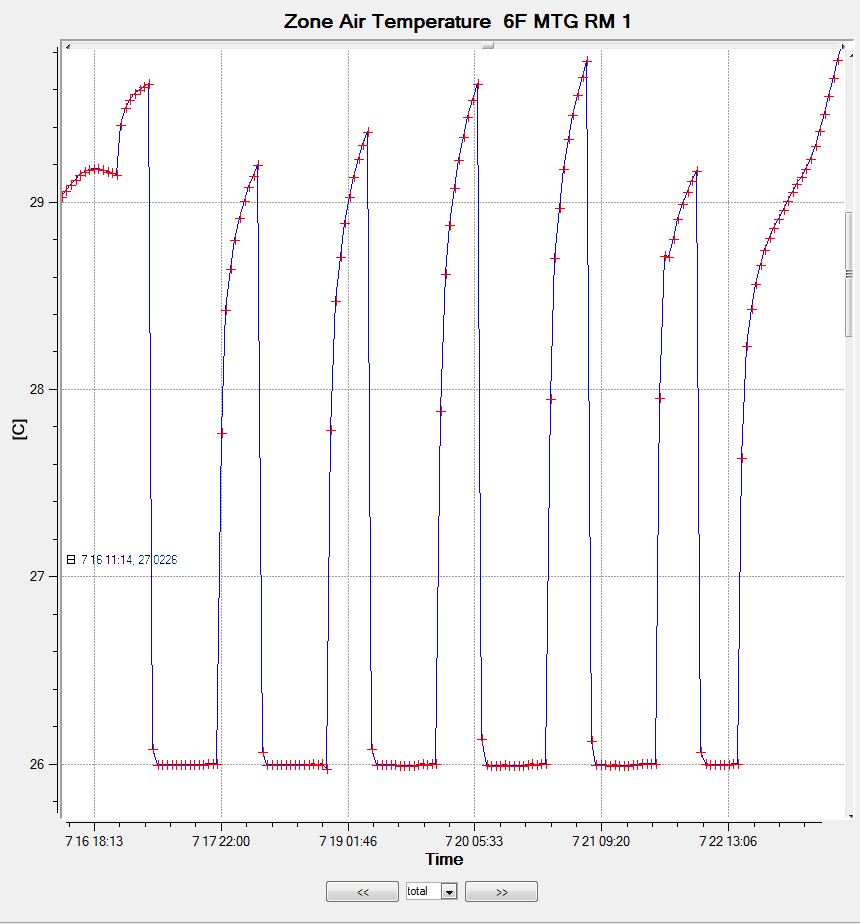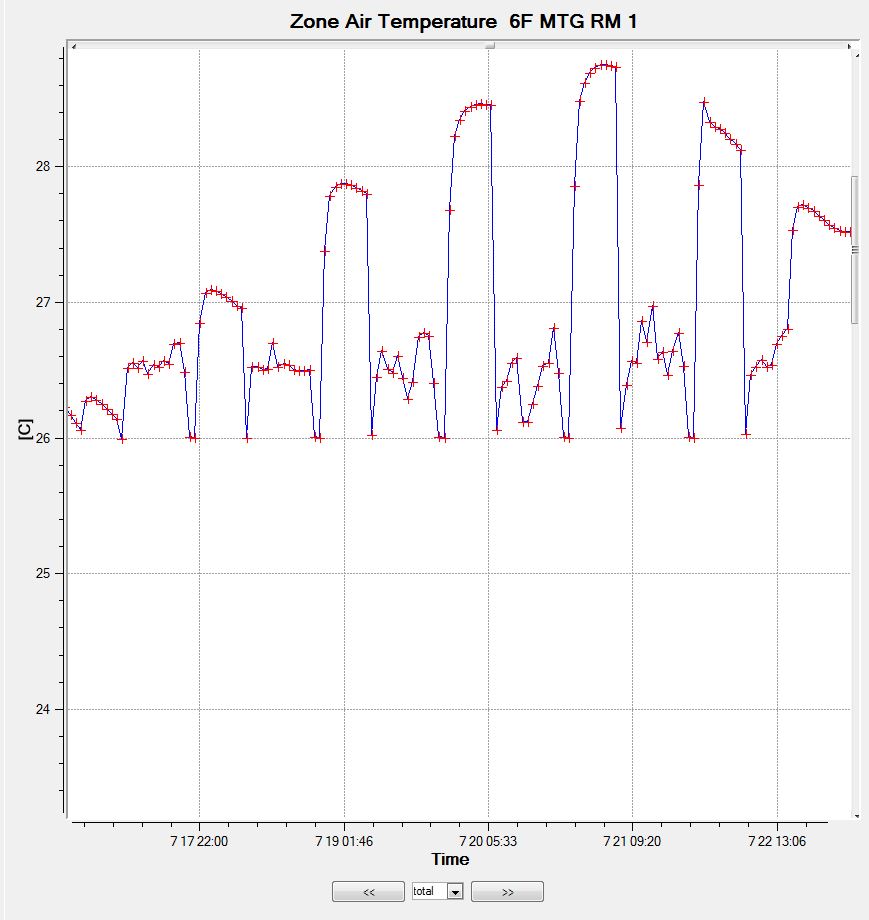VRF with variable fresh air supply
Dear all,
I am trying to model a VRF system with variable flow fresh air fans (in red). As shown in the figure below.
In EnergyPlus (OpenStudio) the is only one fan in each system and it is constant speed (i.e. no red fans). Is there a way I can model the actual design in EnergyPlus or OpenStudio?
Furthermore, when I enter the "Pressure Rise" for the system, should I use the pressure rise for the whole air path, fresh air+internal+exhaust? I believer that might result in an overestimated fan energy consumption because fresh air only makes up a fraction of the supply air. Any advice on that?
Thanks in Advances,
Daniel

After implementing the ZoneHVAC:OutdoorAirUnit approach the problem is basically solved but the zone temperature is less stable. (Set point = 26C)
This is the zone temperature before

This is the zone temperature after






